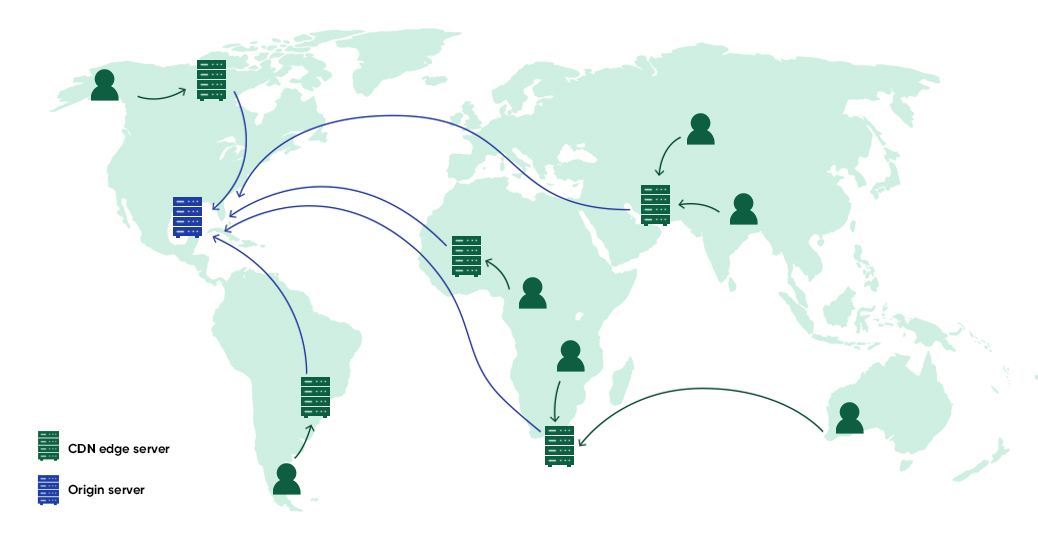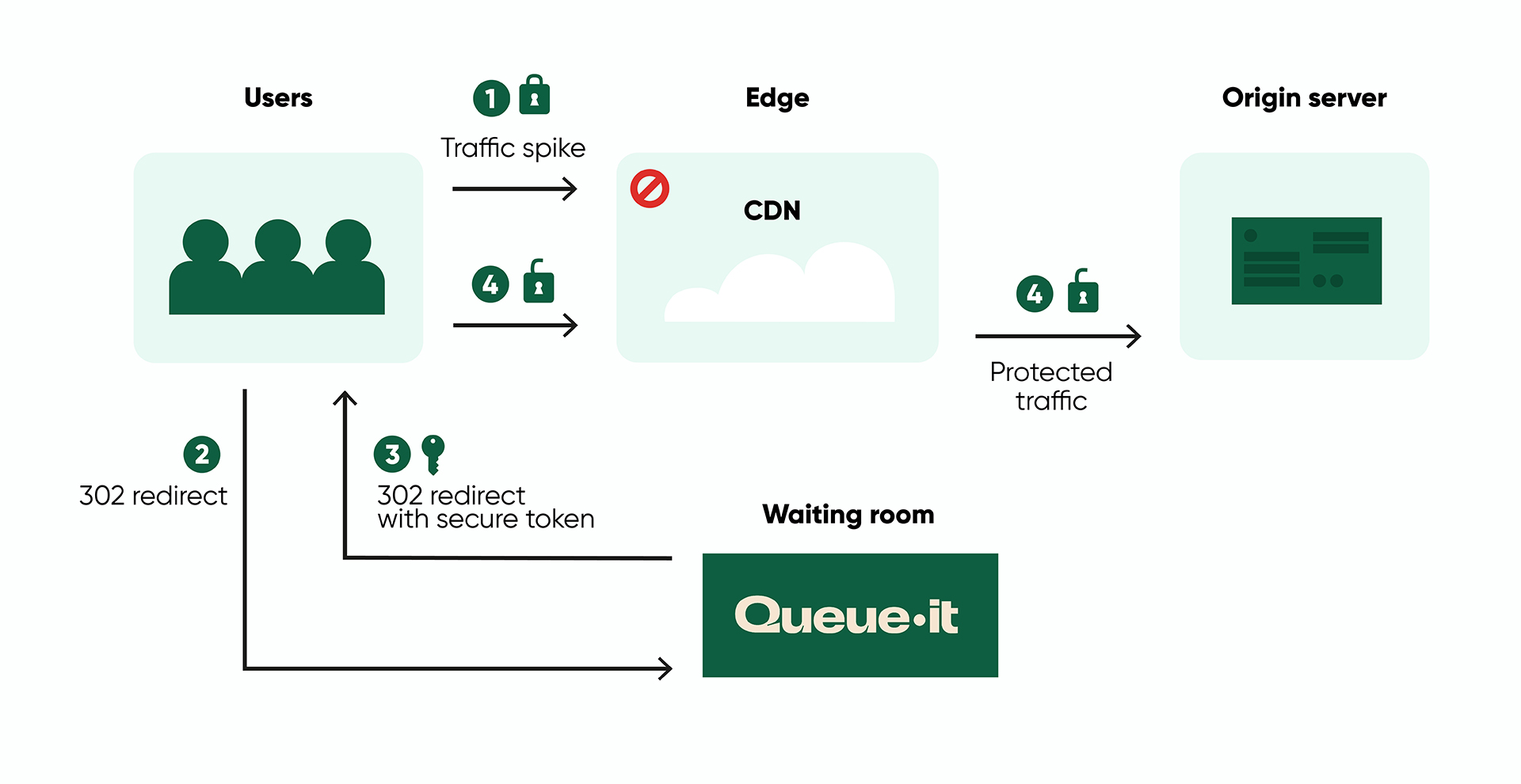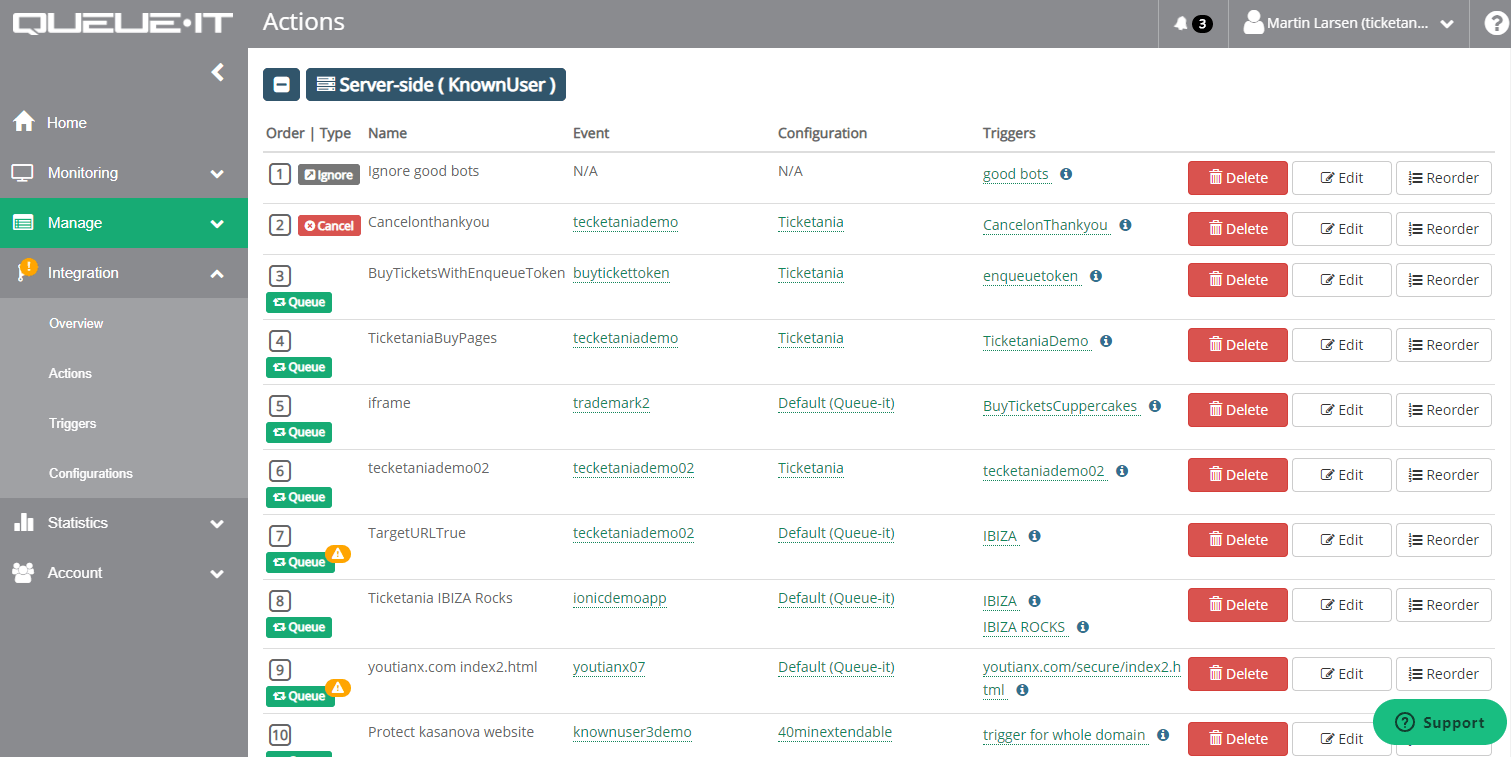New: Edge Connectors bring a whole new level of easy, secure integrations

Queue-it’s server-side connectors bring the security of an unskippable waiting room, but lack the speed and ease of a client-side JavaScript integration. Queue-it now offers edge Connectors that let you keep the security of a server-side integration while leveraging the simplicity and power of edge computing.

Queue-it’s stance on virtual waiting rooms is that application integration is superior to DNS / reverse proxy solutions.
With a DNS solution, all traffic passes through the reverse proxy.
First, this creates an additional point of failure. If the reverse proxy goes down, so will your website. Such a layer could impact website performance and availability.
Second, reverse proxies need to strip SSL encryption to function, rendering sensitive information into clear text. Even if this payload isn’t persisted in storage, it becomes open to unauthorized access. It opens yourself up to one more vector of attack from malicious actors.
However, many consider a DNS / reverse proxy solution to be easier and faster to integrate, compared with an application integration. Integrating at the application level requires developer resources and time to securely integrate Queue-it’s virtual waiting room.
To bring the benefits of fast and simple integration of a DNS / reverse proxy with the security of an application integration, Queue-it is introducing edge Connectors. By integrating with an edge Connector, you get all the benefits of a server-side Connector with an integration that you can configure in minutes, without touching your codebase.
Edge computing involves executing code in a Content Delivery Network, or CDN. A CDN means visitors’ browsers communicate first with a server located near them (an “edge server”), which in turn communicates with the origin server.
This was originally done to help reduce latency and bandwidth use. Now, CDNs are being leveraged as a place to run code before traffic hits an origin server.

An edge Connector is a piece of code that runs before the CDN edge server forwards the request on to the origin backend server, and after the backend has responded but before the response is sent to the website visitor.
This allows the Connector to modify the request and response. For example, the edge can process the visitor’s request and decide to redirect to the origin server or to Queue-it’s waiting room, based on your configuration and request details like cookies and query strings. This means you protect your origin server from traffic spikes, and gain control by ensuring only visitors who have been through the waiting room can proceed to your website.

Combined with the waiting room configuration in the GO Queue-it Platform, you get a powerful integration that can be set up in minutes.
Benefits with the edge Connector include:
- Fast integration and simplified troubleshooting. There’s no need to change anything on your backend setup, so it would be an excellent choice for a complicated legacy system where the backend would be treated as a black box.
- Performance improvement. The load from traffic will hit the edge server and then be redirected to Queue-it’s virtual waiting room, so your backend servers would be fully shielded from traffic spikes.
- Improved availability. An edge Connector will send visitors to the waiting room even if your site is unresponsive.
- Enhanced security. An edge Connector allows for the same unskippable waiting room you would get with an integration on your backend servers.
You can find Queue-it’s edge Connectors on developer resources section of our website. Queue-it currently offers edge Connectors for Akamai, AWS CloudFront and Cloudflare, with a project slated for Fastly as well.
Queue-it configuration in the GO Queue-it Platform remains the same as with a server-side integration.
You configure when and why visitors are sent to a waiting room by configuring rules based on URL path patterns, cookies, headers, or other attributes. Once configured they can be pushed to the edge Connector and you are good to go.

If you are planning to integrate with Queue-it for the first time, make sure to consider an edge Connector for its many benefits: quick integration, simpler troubleshooting, improved performance, better availability, and enhanced security.
If you are using a client-side JavaScript Connector, know that there are substantial security benefits to integrating Queue-it with a server-side or edge Connector instead. Namely, a server-side or edge Connector removes the ability for tech-savvy users to manipulate the client-side code and skip the queue.
And even if you are using a secure server-side integration, you could benefit from the improved performance and availability of an edge Connector.
For more information on how you can get the benefits of an edge Connector, contact your Queue-it support representative at support@queue-it.com.